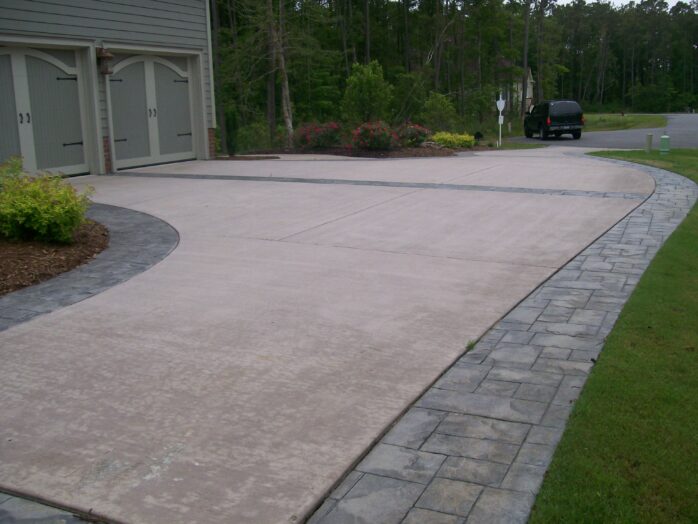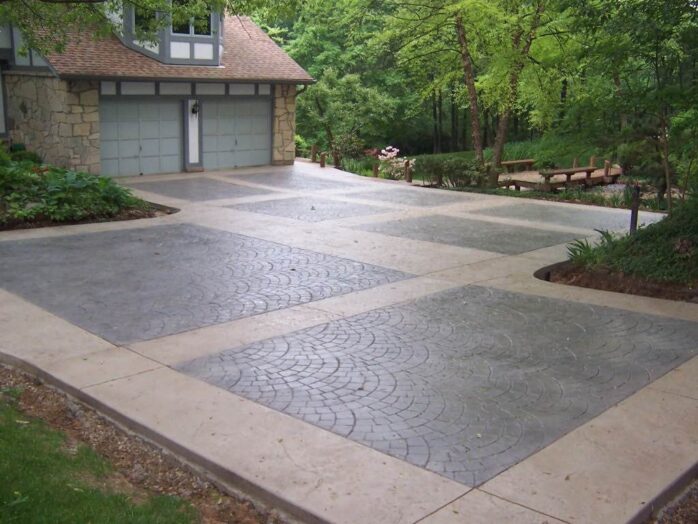As a Minnesota homeowner, you may be thinking of transforming your driveway into something more aesthetically appealing to your visitors. When it’s time to start the project, you are likely to be presented with many different features and material options to choose from.
One of the most common options you may want to consider is stamped concrete. Truthfully, stamped concrete is one of the best options for driveways because of the many benefits it offers.
However, before making a final decision on whether to go for stamped concrete or any other material option for your driveway, you want to make sure you do your homework. Don’t forget that once the driveway is installed, it will be too late to change your mind.
This is to say that driveway installation is a big decision, especially because most homes will only have a maximum of two installations within the home’s lifetime. So, in this article, we discuss the pros and cons of the stamped concrete driveway.
Pros of Stamped Concrete Driveways

Stamped concrete driveways have many benefits. The following are a few of them:
1. Aesthetics
Stamped concrete offers you a wide array of options, with different colors, patterns, and textures available. With its success in imitating almost any landscape surface including natural stone and slate, it is considered one of the most aesthetically appealing options for driveways.
The most popular color scheme for driveways is the earth tones. Many homeowners prefer to go with a natural look because their driveway is not likely to go out of style with it.
When it comes to patterns, you have many options too. In choosing the best pattern for you, a professional landscape designer will look at your property and the size of your driveway to get inspiration.
2. Easy installation
The installation of the stamped concrete driveway does not require as much labor as installing concrete pavers.
This is large because stamped concrete is more like a continuous form. All that is required is to mix the stamped concrete, pour it and form the pattern with a stamp template.
3. Cost-effectiveness
Stamped concrete is considered one of the most cost-effective ways to extend your Minnesota home’s exterior, especially when compared to concrete pavers. Some prefer to have the surface of their stamped concrete sealed to get it resistant to slip and protect it from the elements. However, sealing is not mandatory.
You should note that sealing your stamped concrete driveway will add to the cost of installation and you will need to get it resealed every 3-5 years.
4. Low maintenance
The maintenance requirement of a stamped concrete driveway is minimal and close to none. Also, there will be no worry of weed growth on it, since stamped concrete has no joints between it.
Unlike some other surfaces like concrete pavers, there’s no risk of separating or unsettled surfaces.
Cons When Dealing with Stamped Concrete Driveways
The following are a few of the downsides of stamped concrete driveways:
1. Imitations can be recognized

Although stamped concrete in Minnesota can easily mimic other driveway materials such as natural stone and slate, it remains just an imitation. Yes, it is an attractive option for a driveway, but it can easily be recognized as a mere imitation.
2. Cracking
It is just a matter of time, stamped concrete will eventually crack. This is one of the major downsides that you will always hear about stamped concrete driveways. Considering that it is one continuous surface with no allowance for movement, the surface has some relief joints that have been cut into it.
When cracks begin to plague the surface of stamped concrete, the relief joints are the natural paths they will follow. The possibility is high that these joints will be quite visible on the driveway.
3. Color Matching

The process of coloring stamped concrete is phased during the driveway installation. An exact recreation of this color layering is almost impossible.
So, when repairing a damaged or chipped stamped concrete driveway, matching the original color will be very difficult.
How long does stamped concrete last?
The lifespan of stamped concrete in Minnesota is just about the same as standard or non-stamped concrete – which is about 25 years. This is based on the assumption that the stamped concrete driveway is correctly installed and well maintained.
The installation process of stamped concrete and the traditional concrete is quite similar, the only difference being just the additional process of stamping the concrete. The stamping phase is done just when the concrete is almost dry but sufficiently malleable to give the surface a texture using a stamp template.
Final thoughts
Choosing stamped concrete for your driveway installation for your Minnesota home is a great option that can offer many benefits including aesthetics, low maintenance, and cost-effectiveness.
You can see the average cost of a stamped concrete driveway at Home Advisor. The good thing is that some downsides can be minimized by good maintenance practices.




